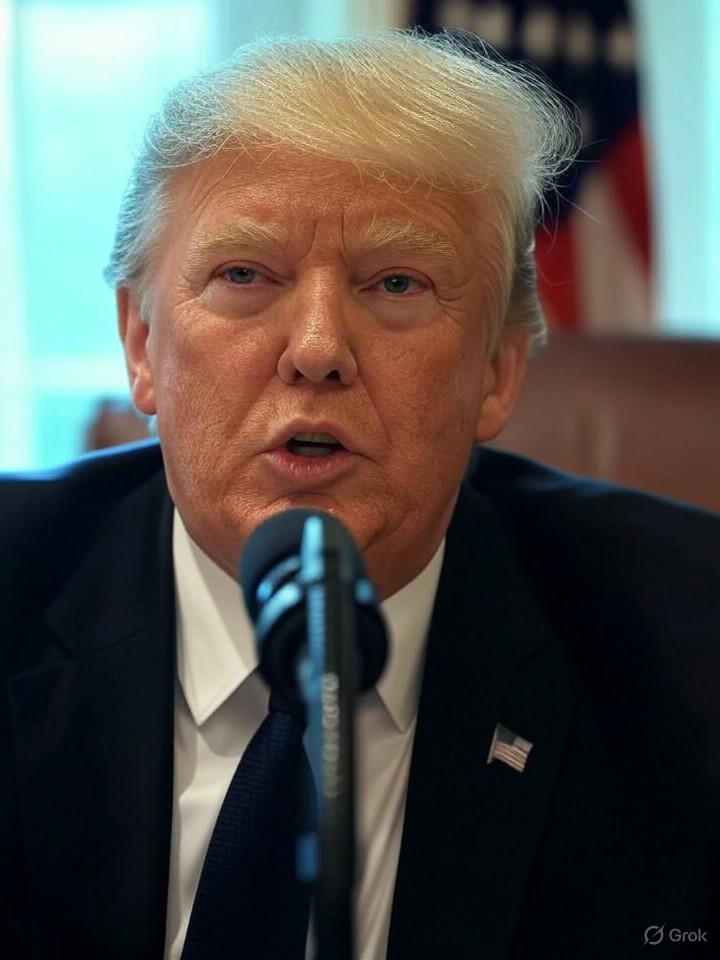In a significant escalation of trade tensions, the administration of President Donald Trump has imposed extraordinary demands on Taiwan Semiconductor Manufacturing Co. (TSMC). Reports indicate that the U.S. will consider reducing a 15% tariff on Taiwanese goods if TSMC agrees to acquire a 49% stake in Intel Corp. and invest an additional $400 billion in the United States. This development could drastically alter the global semiconductor landscape.
The proposed conditions, first highlighted in Taiwanese media and circulating widely on social platforms, reflect Trump’s “America First” agenda, intertwining trade policy with national security. As negotiations progress, sources familiar with the matter have revealed that Taiwan’s trade officials are maintaining confidentiality. Any potential agreement will require parliamentary review, as detailed in a Reuters article from August 4, 2025.
Trump’s administration had previously enacted a 32% “reciprocal tariff” on Taiwanese goods in April 2025, a measure initially excluding semiconductors. This move has since raised concerns regarding its impact on technology supply chains.
Financial Implications and Industry Reactions
Discussions on platforms such as X (formerly Twitter) have intensified around the proposed conditions. Analysts and industry insiders are examining the implications of TSMC’s potential involvement in U.S. chip production. One financial analyst noted the low probability yet high stakes of this scenario, citing reports indicating that U.S. officials view the 15% tariff as a concession contingent on TSMC’s deeper integration with Intel.
The economic ramifications could be considerable, particularly for the technology sector. A report from the Tax Foundation estimates that Trump’s tariffs could increase the average tax burden by approximately $1,300 per U.S. household this year, with potential ripple effects on global technology prices. Should TSMC comply with these demands, it could hasten the transfer of advanced chip manufacturing to the U.S., which may strain Taiwan’s economy, where more than 70% of information and communications technology exports are directed to the U.S., according to a report from Focus Taiwan (CNA English News).
Geopolitical Concerns and Strategic Moves
The situation is not merely a trade negotiation; it also represents a strategic maneuver to counter China’s growing influence in the semiconductor industry. An article from the Foreign Policy Research Institute notes that concerns about U.S. reliability have increased in East Asia following Trump’s April tariff announcements.
Taiwan’s government has responded cautiously, proposing to enhance U.S. imports and eliminate tariffs on American goods. However, the opposition party, the Kuomintang, has criticized these measures, arguing they undermine President Lai Ching-te‘s strategy to strengthen ties with the U.S. against China.
Online discussions reflect widespread alarm among technology enthusiasts regarding the potential disruptions to supply chains. Many users speculate about how TSMC’s compliance might affect stock prices for both TSMC and Intel, aligning with a BBC analysis from July 31, 2025, which connects Trump’s trade policies to rising U.S. prices.
As negotiations continue, the tech industry braces for potential volatility. A report from The Straits Times on August 5, 2025 highlights growing skepticism in Taiwan about being leveraged as a bargaining chip in U.S.-China discussions. If TSMC’s acquisition of the Intel stake materializes, it could enhance U.S. semiconductor initiatives, supported by TSMC’s existing $65 billion investment in factories in Arizona.
Critics of Trump’s strategy argue that this approach risks alienating a crucial ally. A column in the Chicago Tribune discusses Taiwan’s domestic challenges, including pressures on defense spending amid tariff threats.
As industry leaders weigh their options, they face a dilemma: comply with U.S. demands and potentially compromise Taiwan’s technological edge, or resist and encounter higher trade barriers, all while navigating Trump’s unpredictable approach that could redefine global tech alliances.
